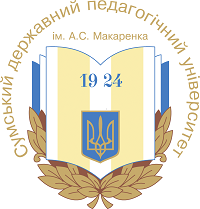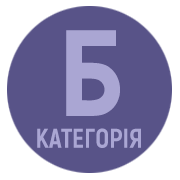THE FORMATION OF THE MILITARY PERSONNEL IMAGE IN THE MASS MEDIA DURING THE FULL-SCALE RUSSIAN-UKRAINIAN WAR: A LINGUISTIC-COGNITIVE ANALYSIS
DOI:
https://doi.org/10.32782/philspu/2025.11.14Keywords:
military discourse, concept, conceptosphere of the future, linguistic and cognitive analysis, interview, strategic visionAbstract
The article carries out a comprehensive study of the methodology for analyzing textual and verbal means of forming the image of the military in modern military discourse. It is emphasized that the construction of this image is not only a linguistic, but also a socio- cultural process that integrates the achievements of linguistics, sociology, cultural studies and psychology. The role of the media, works of art, political speeches, interviews and everyday speech in creating multidimensional representations of the military as symbols of heroism, sacrifice and national unity, as well as participants in brutal and traumatic conflicts, is traced. The scientific novelty lies in the combination of discursive, critical, semantic, metaphorical, stylistic, rhetorical and contextual analyses with a linguocognitive approach, which allows to reveal hidden meanings and mechanisms of influence on mass consciousness. The results prove that repeated language strategies (“hero”, “defender”, “shield of the nation”) contribute to the consolidation of a positive image of the military and strengthen patriotic narratives, while the use of lexemes with negative connotations (“aggression”, “cruelty”, “war machine”) forms a critical or alienated vision. The study revealed a significant role of stylistic devices (epithets, comparisons, hyperbole), rhetorical questions and repetitions in the mobilization of public support. At the same time, non-verbal factors of communication (intonation, pauses, gestures, facial expressions) are of particular importance, which, according to the analysis, can convey up to half of the semantic load and form a holistic emotional perception of the military. The authors draw attention to cross-cultural differences in the presentation of military images: if heroic-patriotic rhetoric dominates in Ukrainian discourse, then a number of foreign practices more often show a critical, ambivalent attitude. As a result, it is proven that textual and verbal strategies not only reflect reality, but also actively construct social memory, form a strategic vision and determine the ideological orientations of society. The practical significance of the study lies in the possibility of applying its results in creating effective communication and media strategies, as well as in developing mechanisms to counteract information manipulation in the globalized information space.
References
Ажнюк Л. В. Мова ворожнечі як об’єкт юридичної лінгвістики. Українська мова і європейський лінгвокультурний контекст. Київ: Вид. дім Д.Бураго, 2019. С. 304–317.
Анісімова Д. М., Сергієва А. В. Медіатекст. Особливості його функціонування. Радіоелектроніка та молодь у ХХІ столітті: матеріали 25-го Міжнар. молодіжн. форуму, 20–22 квітня 2021 р. Харків: ХНУРЕ, 2021. Т. 11. С. 11–12.
Сухопутні війська ЗС України. «Піхота – щит нації» / Facebook, 2025. URL : https://surli.cc/iychin (дата звернення: 11.09.2025).
Цуркан Ю., Неосемантизація як віддзеркалення соціодинаміки в сучасних українськомовних засобах масової інформації, «Лінгвістичні дослідження: збірник наукових праць Харківського національного педагогічного університету імені Г. С. Сковороди», 2018. Вид. 48. С. 337–342.
Радіо Культура. «Показове вбивство політика та громадського діяча» / Facebook, 2025. URL : https://surl.li/zgjftm (дата звернення: 11.09.2025).
OBOZ.UA. Порядочные и честные люди: друг «крымских диверсантов» рассказал их биографию. URL: https://surl.li/lcgbha (дата звернення: 11.09.2025).
Люди. Не люди. Знаменитости о войне в Украине. URL: https://human-nonhuman.info (дата звернення: 21.08.2025).
44 окрема механізована бригада. «Хто, як не ми, захистить наші родини, міста, Україну від ворожого вторгнення» / Facebook, 2024. URL : https://surl.lu/fmgqjq (дата звернення: 11.09.2025).
Ананьївська міська територіальна громада. І знову болюча звістка сколихнула Ананьївську громаду / Facebook, 2025. URL : https://surl.lu/xibhgd (дата звернення: 11.09.2025).
67 окрема механізована бригада ЗСУ. «Якщо не хочеш бути в ярмі чи стати рабом, треба боротися!» / Face- book, 2025. URL : https://surl.li/pyotjo (дата звернення: 11.09.2025).
ВМС ЗС України. «Бойові орли першого батальйону морської піхоти 36 окрема бригада морської піхоти» / Facebook, 2025. URL : https://www.facebook.com/watch/?v=757665438880434 (дата звернення: 11.09.2025).
Національний музей Революції Гідності. «#Цей_день_на_Майдані: 19 лютого 2014 року» / Facebook, 2025. URL : https://surli.cc/tibnki (дата звернення: 11.09.2025).
Рощина Л. Б. О. П. П. Х. А. Війна і битва наративів: Як російська пропаганда діє в медійному просторі Глобального Півдня. detector.media. URL: https://detector.media/infospace/article/210274/2023-04-19-viyna-i-bytva-naratyviv-yak-rosiyska-propaganda-diie-v-mediynomu-prostori-globalnogo-pivdnya/ (дата звернення: 21.08.2025).
АрміяInform. Воїни світла, воїни добра, воїни життя: пам’ятаючи минуле, захищаємо майбутнє. URL: https://surl.li/wrpskq (дата звернення: 21.08.2025).
Zahid.Net. Якщо русня так хоче, вона отримає ще більші втрати. URL: https://surl.li/ycaydw (дата звернення: 11.09.2025).
Баган М. Вторинна номінація захисників і ворогів України на тлі російського вторгнення 2022 р.: лінгвоаксіологічний і дериваційний аспекти. «Slavia Orientalis», 2023. Vol. LXXII. No 1. S. 173–190, URL: https://doi.org/10.18523/lcmp2522-9281.2023.9.121-139 (дата звернення: 21.08.2025).
Бочулинський С. Концептуальні та емпіричні особливості дискурсивного конструювання соціальної реальності. Релігія та Соціум, 2015. № 1-2(17-18). С. 255–262.
Крилова-Грек Ю. Психолінгвістичні аспекти політичного дискурсу. Вісник Київського національного університету імені Тараса Шевченка, 2015. С. 22–24.
Район. Історія. День, який вшановує жертовність і відвагу: пам'яті Героїв Небесної Сотні. URL: https://surl.lt/qpapkc (дата звернення: 21.08.2025).
Слободська І. А., Мальований Р. В. Вплив ЗМІ на формування громадської думки : thesis. 2016. URL: http://er.nau.edu.ua/handle/NAU/21048 (дата звернення: 21.08.2025).








